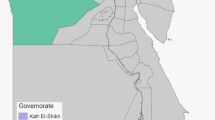Summary
An investigation of trypanosomiasis in camels indicated a high prevalence of infection in southern Ethiopia. Various direct and indirect laboratory methods for the diagnosis of infection withTrypanosoma evansi were compared and evaluated. At the present time inoculation of camel blood into laboratory rodents appears to be the best direct diagnostic method. The formol-gel test and the Takata test appear to be the most sensitive and accurate of the biochemical methods available. However, there still remains a need for an accurate diagnostic test for individual cases.
Résumé
L'étude des trypanosomiases du chameau a montré une grande prédominance de cette infection en Ethiopie du Sud.
Diverses méthodes de laboratoire, directes et indirectes, pour le diagnostic de l'infection àT. evansi sont comparées et évaluées.
A l'heure actuelle, l'inoculation de sang de chameau à des rongeurs de laboratoire paraît être la meilleure méthode de diagnostic direct. Le test au gel de formol et le test de Takata semblent les méthodes biochimiques les plus sensibles et les plus précises.
Cependant un test de diagnostic précis pour les cas individuels reste à trouver.
Resumen
Una investigación de Tripanosomiasis en camellos en el sur de Etiopía dio como resultado una prevalencia alta de la infección. Se compararon y evaluaron varios métodos directos e indirectos de laboratorio para el diagnóstico de la enfermedad. Actualmente el mejor método diagnóstico es la inoculación de reodores de laboratorio. Las pruebas químicas del formol gel y la takata parecen ser las más sensitivas y seguras. Sin embargo todavía hace falta una prueba diagnóstica segura para casos individuales.
Similar content being viewed by others
References
Abd-El-Ghaffar, M. (1960). El-Debab. A new indicator for its detection.Proceedings of the 1st Annual Veterinary Congress, Cairo, 1960, pp. 307–313
Abdel-Latif, K. (1958). The incidence of diseases caused by intercorpuscular blood parasites in camels in Egypt.Veterinary Medicine Journal, Giza,4, 43–54.
Bennett, S. C. J. (1929). The mercuric chloride test for camel trypanosomiasis.Journal of Comparative Pathology and Therapeutics,42, 118–126.
Bennett, S. C. J. &Kenny, P. A. C. (1928). Mercuric chloride as a diagnostic agent for trypanosomiasis in camels.Journal of Comparative Pathology and Therapeutics,41, 341–358.
Curasson, G. G. (1947).Le Chameau et ses maladies, pp. 132 and 137. Vigot Freres, Paris.
Gatt Rutter, T. E. (1967). Diseases of camels. Part 2. Protozoal diseases.Veterinary Bulletin,37, 611–618.
Gill, B. S. (1964). A procedure for the indirect haemagglutination test for the study of experimentalTrypanosoma evansi infections.Annals of Tropical Medicine and Parasitology,58, 473–480.
Godfrey, D. G. &Killick-Kendrick, R. (1962.Trypanosoma evansi in camels in Nigeria.Annals of Tropical Medicine and Parasitology,56, 14–19.
Goel, S. K. &Singh, R. P. (1971). Comparative studies on certain diagnostic tests in the diagnosis of Surra.Journal of Research (Ludhiana),8, 404–406.
Horgan, E. S. &Bennett, S. C. J. (1929). The mercuric chloride test for trypanosomiasis in camels. Mechanism of the reaction.Journal of Comparative Pathology and Therapeutics,42, 188–196.
Killick-Kendrick, R. (1968). The diagnosis of trypanosomiasis of livestock; a review of current techniques.Veterinary Bulletin,38, 191–197.
Knowles, R. H. (1924). The formol-gel test as applied to camels affected withTrypanosoma soudanense.Journal of Comparative Pathology and Therapeutics,37, 37–44.
Knowles, R. H. (1925). Treatment of camels affected withTrypanosoma soudanense with “Bayer 205” and further observations on the formol-gel test.Journal of Comparative Pathology and Therapeutics,38, 42–46.
Knowles, R. H. (1927). Trypanosomiasis of camels in the Anglo-Egyptian Sudan: diagnosis, chemotherapy, immunity.Journal of Comparative Pathology and Therapeutics,40, 59–71, 118–143.
Krugsman, B. J. (1933).. Cited in Hoare, C. A. (1972).The Trypanosomes of Mammals, A Zoological Monograph, p. 578. Oxford and Edinburgh, Blackwell.
Lanham, S. M. &Godfrey, D. G. (1970). Isolation of salivarian trypansomes from man and other mammals using DEAE-cellulose.Experimental Parasitology,28, 521–534.
Peceveur, M. (1938). Notes sur certaines affections du cheplel des regions nordest du Tchad.Receuil de Médecine Vétérinaire exotique,11, 113–118.
Varley, H. (1969).Practical Clinical Biochemistry, p. 397. Whitefriars Press, London and Tonbridge.
Williamson, J. (1970). InThe African Trypanosomiases (ed. H. W. Mulligan), p. 138. George Allen and Unwin, London.
Woo, P. T. K. (1969). The haematocrit centrifuge for the detection of trypanosomes in blood.Canadian Journal of zoology,47, 921–923.
Author information
Authors and Affiliations
Rights and permissions
About this article
Cite this article
Pegram, R.G., Scott, J.M. The prevalence and diagnosis ofTrypanosoma evansi infection in camels in southern Ethiopia. Trop Anim Health Prod 8, 20–27 (1976). https://doi.org/10.1007/BF02383361
Accepted:
Issue Date:
DOI: https://doi.org/10.1007/BF02383361




